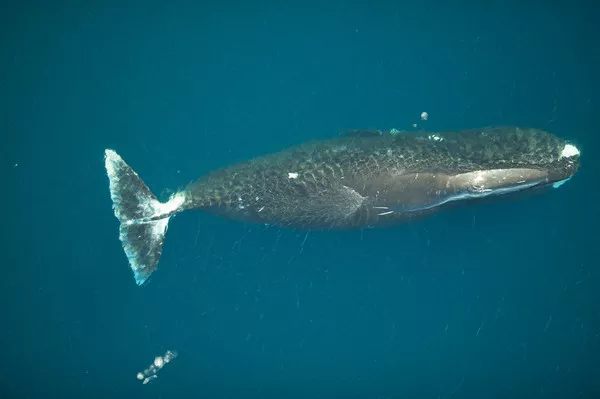The quest for longevity has captivated humanity for centuries, with individuals constantly seeking the secrets to living longer, healthier lives. While humans have made significant strides in extending their lifespan through advancements in medicine and technology, there are creatures in the animal kingdom that have been defying the odds for millennia. Among these remarkable beings is the oldest living mammal, a creature whose longevity continues to fascinate and inspire scientists and enthusiasts alike.
In this article, we delve into the world of the oldest living mammal, exploring its characteristics, habitat, and the factors that contribute to its exceptional lifespan. From the depths of the ocean to the heights of the mountains, these resilient creatures offer valuable insights into the mysteries of aging and longevity.
The Oldest Living Mammal:
The title of the oldest living mammal is a coveted one, held by a creature that has surpassed all expectations and defied the natural aging process. While there are many contenders for this prestigious title, one species stands out as a true survivor: the bowhead whale (Balaena mysticetus).
The Bowhead Whale:
The bowhead whale is a majestic creature that inhabits the frigid waters of the Arctic and sub-Arctic regions. With its massive body and distinctive bow-shaped head, this marine mammal is easily recognizable and has long captured the imagination of humans.
What sets the bowhead whale apart from other mammals is its incredible longevity. Scientists estimate that these magnificent creatures can live for over 200 years, making them the longest-lived mammals on the planet. This extraordinary lifespan has puzzled researchers for decades, leading to a concerted effort to unravel the secrets of the bowhead whale’s longevity.
Unraveling the Secrets of Longevity
The quest to understand why bowhead whales live for so long has led scientists to explore a variety of factors that may contribute to their exceptional lifespan. One key area of research focuses on the whale’s DNA, specifically its telomeres.
Telomeres are protective caps at the ends of chromosomes that help prevent DNA damage and maintain genomic stability. As organisms age, their telomeres naturally shorten, leading to cellular aging and eventual death. However, in bowhead whales, researchers have discovered that their telomeres are unusually long compared to other mammals, suggesting that they may play a crucial role in their longevity.
In addition to their unique genetic makeup, bowhead whales also possess a variety of physiological adaptations that may contribute to their longevity. For example, these whales have thick layers of blubber that provide insulation against the cold waters of the Arctic, as well as specialized blood vessels that help regulate body temperature. These adaptations not only enable bowhead whales to survive in harsh environments but also may help protect them against the effects of aging.
The Role of Environment and Lifestyle
While genetics certainly play a significant role in determining lifespan, environmental factors and lifestyle choices also play a crucial role in determining the longevity of an organism. In the case of bowhead whales, their habitat in the Arctic and sub-Arctic regions may offer unique advantages that contribute to their exceptional lifespan.
The cold waters of the Arctic are relatively stable in temperature, which may help slow down the metabolic rate of bowhead whales and reduce the production of harmful free radicals that can damage cells and accelerate aging. Additionally, the lack of natural predators in their habitat may reduce the risk of predation and increase the likelihood of survival into old age.
Furthermore, the lifestyle of bowhead whales may also contribute to their longevity. These creatures are known for their slow pace of life, spending much of their time swimming leisurely through the icy waters of the Arctic in search of food. This low-stress lifestyle may help reduce the wear and tear on their bodies and contribute to their overall health and longevity.
Conservation and Preservation Efforts
The remarkable longevity of bowhead whales serves as a poignant reminder of the importance of conservation and preservation efforts in protecting Earth’s most vulnerable species. As apex predators in their ecosystem, bowhead whales play a crucial role in maintaining the delicate balance of the marine environment. However, they face numerous threats, including habitat destruction, pollution, and climate change.
To ensure the continued survival of bowhead whales and other endangered species, it is essential that we take proactive steps to protect their habitats and reduce human impact on the environment. This may include implementing stricter regulations on commercial fishing and shipping activities in Arctic waters, as well as investing in research and monitoring programs to better understand the needs and behaviors of these magnificent creatures.
See Also: Top 10 Biggest Fish In The World
A Quick Review
The bowhead whale’s extraordinary longevity is a testament to the remarkable resilience and adaptability of life on Earth. By studying these magnificent creatures, scientists hope to unlock the secrets of aging and longevity, offering valuable insights that may one day benefit humans and other species alike.
As we continue to explore the mysteries of the natural world, let us marvel at the incredible diversity and ingenuity of life on our planet. From the depths of the ocean to the heights of the mountains, there are countless wonders waiting to be discovered, each one a reminder of the beauty and complexity of the world we inhabit.
You Might Be Interested In:
- Animals – You May Not Know” href=”https://www.validdownloads.com/archives/2509″ rel=”bookmark”>World’s 5 Cleanest Animals – You May Not Know
- 10 Most Rarest Mammals In The World
- The World’s Largest Cephalopod – The Giant Squid!
























